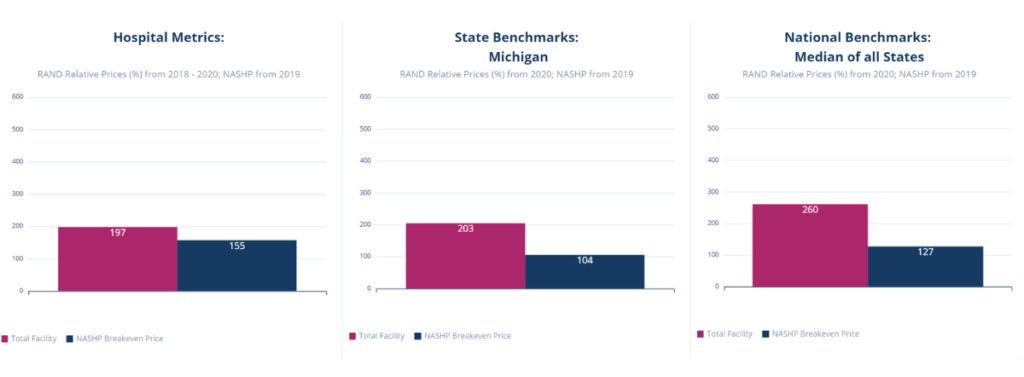Thanks to Sage Transparency, healthcare consumers and employers can compare hospital prices like never before.
Pricing information is readily and easily available for an endless amount of products and services… but that’s not necessarily the case for healthcare. At the unveiling of Sage Transparency in May of 2022, Employers’ Forum of Indiana President and CEO Gloria Sachdev stated, “You can look up the price and quality of nearly anything you want to shop for – a car, a stapler, a pencil, anything – and you can research it and then make a decision…we need to have information so that we can be better consumers, better shoppers of care.”
Nobody wants to pay more for healthcare than they have to – and that’s why Sage Transparency was created.
Sage Transparency combines public and proprietary data about quality and cost at every healthcare system in the country to create a comprehensive, customizable dashboard for individuals and employers. TCHP founder Mike Hill walks through the tool and shares additional insights in our newest video.
What do hospitals charge?
Using data from the National Academy for State Health Policy (NASHP) database, Sage Transparency shows how a hospital’s costs compare with their Medicare breakeven price for services. For example, in the graph below, in order for this hospital to not gain nor lose any profit, they need to charge 155% of the cost that Medicare reimburses for care. However, to ensure they make a profit, this particular hospital charges 197% of Medicare.
The breakeven price varies from hospital to hospital based on a number of factors, and Sage Transparency shows the national and state average breakeven prices to demonstrate how cost effective a hospital or system is. In our example, the average hospital in the state of Michigan charges 203% of Medicare, meaning this hospital is less expensive than the average hospital in the state with their costs of 197% of Medicare.

When looking at quality data for this hospital, their overall patient experience and hospital quality ratings are quite high, meaning that this hospital has an above average quality of care with below average prices – a win-win for healthcare consumers.
How can Sage Transparency help individuals?
With cost and quality information freely available from Sage Transparency, individuals can make more informed decisions about the hospital systems they seek treatment from. By looking at a hospital’s cost in combination with their quality scores, healthcare consumers can prevent paying above average prices for a lower quality of care.
How can Sage Transparency help employers?
Sage Transparency can help individuals as they pursue their own personal care – but how can employers utilize this tool?
Historically, when employers with self-funded health plans have attempted to negotiate prices with hospitals and insurance companies, they’ve been at a tremendous disadvantage due to the lack of data and information they have access to.
As direct contracting becomes more common for health plans, employers can now have conversations with hospital systems to attempt to negotiate a fair reimbursement level. By utilizing the Sage Transparency tool, employers can see a hospital’s margin between cost and price and negotiate for lower prices within this margin.
Sage provides employers with a great tool to make informed decisions and manage their healthcare plan as efficiently as possible.


